What Happens if Overbite Is Not Treated?
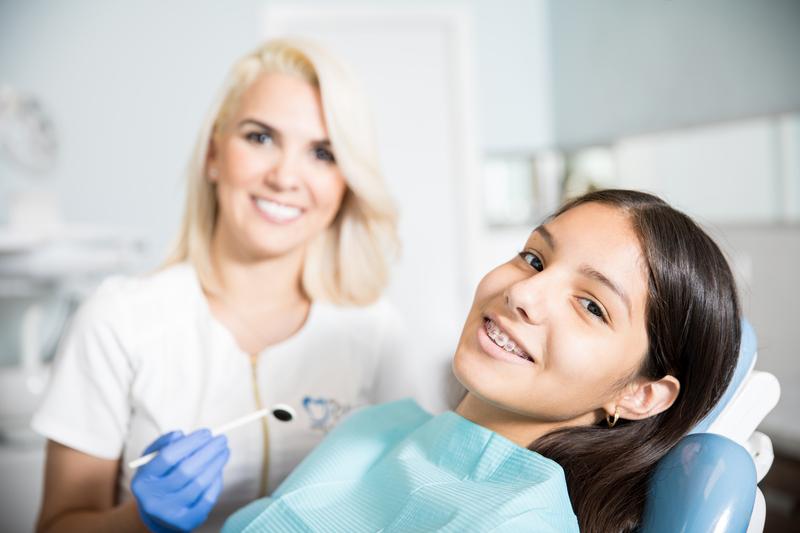
Contents:
A bite is the relative positioning of the tooth rows when the jaws are closed. It is formed in childhood, before the age of 15. When the upper teeth overlap the lower teeth by about one-third of their crowns and the molars are firmly connected, it is considered the correct bite.
The perfect bite is not that widespread. The majority of the population has occlusal pathologies. Often on TV, we see the faces of politicians, business people, and celebrities with an incorrect bite. It is not just an aesthetic problem. Pathological positioning of teeth and jaws is detrimental to health.
Causes of malocclusion:
- jaw abnormalities at some stage of the child’s development;
- genetic predisposition;
- birth trauma;
- bad habits (prolonged use of a dummy, keeping the fingers in the mouth, a desire to chew on pencils or pens)
- uncomfortable sleeping position;
- inappropriate diet (poor diet, lack of solid foods) and dental care;
- loss of teeth without timely dentures replacement;
- teething disorders;
- malnutrition (incomplete and missing solid foods);
- teething disorders.
Bite formation takes place in 5 stages at different ages. Therefore, children need to be examined regularly at the dentist’s office to identify disorders in the early stages. If the jaws do not develop properly, early treatment can eliminate the problem quickly.
Removable orthodontic appliances or combined treatment are used for up to 10-11 years of age. From the age of 11-12 years, braces may be fitted.
Experts say that malocclusions in children are more accessible to correct than in adults.
A distinction is made between an orthognathic (standard), prognathic, mesial bite, orthogenic or bi-prognathic bite. Each of these has its modifications:
- Distal – the maxillary arch protrudes to the front;
- Mesial – the lower jaw protrudes considerably relative to the front jaw;
- Deep occlusion – the upper teeth overlap the lower teeth by more than 55-60%;
- Crossbite – the jaw arches are displaced to the opposite sides of each other;
- Open bite – a type of malocclusion when the molars are misaligned (anterior and lateral open bite).

The pathology is diagnosed with an external examination, CT, OPG, TRG, and computer simulation techniques.
The dentist recommends the method of bite correction based on the diagnosis, the patient’s lifestyle, habits and preferences, and common diseases. Developments in dentistry, new technologies, and materials allow for applying the previously considered inaccessible methods. For example, modern braces look aesthetically pleasing, are practically invisible on the teeth, and do not cause discomfort.
How Long Does It Take To Correct the Bite?
It is possible to correct bite at any age. The duration of the correction depends on several factors:
- age of the patient;
- type of the problem;
- treatment method;
- compliance with the doctor’s recommendations;
- concomitant diseases.
In children, 6-24 months is sufficient to correct the bite. For teenagers, this period extends to 12-36 months. For adults, it may take several years to eliminate the pathology and a more extended retention period.
The main methods of bite correction are
- removable and fixed plates of various designs (with expansion screws, with and without elastics, single- and double-jaw);
- braces (metal, ceramic, sapphire, lingual);
- activators, trainers, aligners.
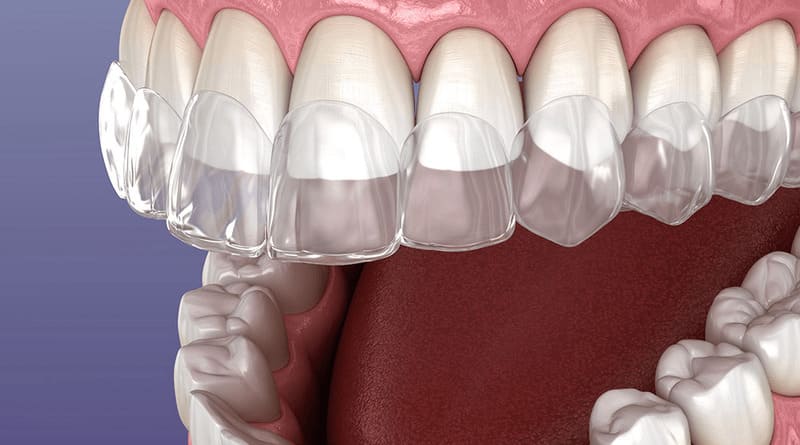
Orthodontic braces are constructions of plastic bases, metal hooks, arches, screws, and springs. They can be used to enlarge the tooth row and correct the problem of protrusion or retrusion.
Bracket systems look like metal arches with metal hooks attached to them, which are connected to the teeth. Pressure is applied to the teeth by stressing the metal arch to bring them back to their normal position.
Aligners are systems of mouthguards made of special plastic. The computer simulation calculates the restoration’s manufacturing process, type, and duration. The gradual change of the appliances will gradually return the teeth to their correct position.
Trainers – silicone bicuspid mouth guards that help correct the positioning of jaws, tongue, lips, and cheeks.
Veneers and lumineers are ceramic fillings on teeth in the smile zone. They require minimal grinding of the teeth. They are used for minor problems with the alignment or rotation of the teeth.
Protective treatment is essential for developing a correct bite (eating solid foods from childhood, giving up wearing a dummy for a long time, using verbal exercises, massage, choosing a sleeping pillow, and avoiding bad habits).
Visit your dentist regularly, at least once a year. Your dentist will assess the progressive development of the bite and provide recommendations for the correct development of dentition and oral hygiene.
How do braces change the face?
Over time, face asymmetry due to bite leads to rapid aging, sagging of soft tissue, the appearance of a double chin, and drooping corners of the mouth. All this leads to psychological problems. For example, the person is embarrassed by their appearance, smiles, and talks less.
People with receding chins look sullen and belligerent. On the other hand, patients with a distal bite give the impression of weak-willed, insecure people.
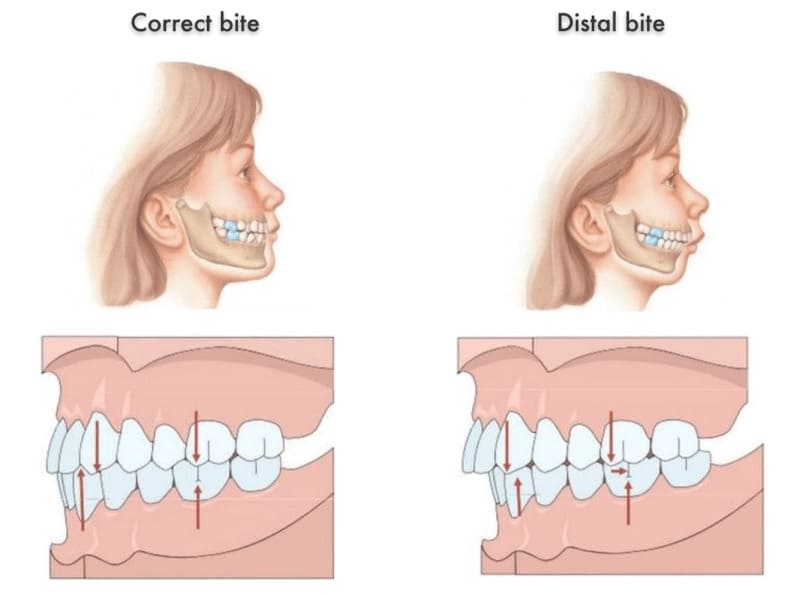
Orthodontic treatment helps to get rid of these disadvantages. It aligns the teeth, corrects the bite, and eliminates facial asymmetry. As a result, the appearance of the face improves. The double chin disappears, skin and facial muscles get toned, and a person gives up grimacing and teeth grinding. Instead, the smile becomes sincere and open.
Some inconveniences while wearing braces are compensated by many positive changes in appearance. Even Hollywood actors willingly wear braces and are happy to show their fans the correction results. Celebrity orthodontist patients include Tom Cruise, Britney Spears, Gwen Stefani, Drew Barrymore, and Julia Roberts.
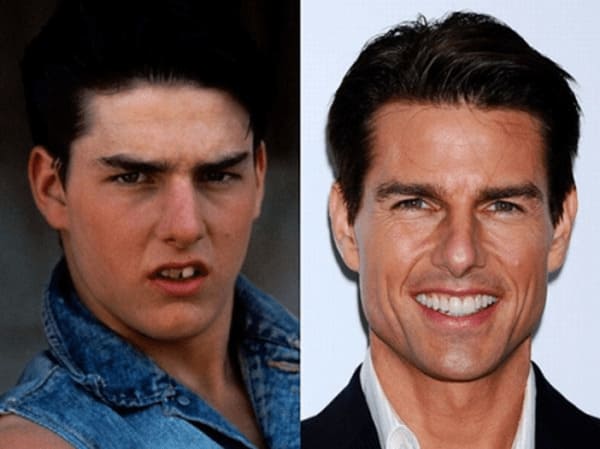
Even complex child malocclusion is more accessible to treat than in an adult. Through regular visits to the dentist, the problem can be recognized and solved promptly. Parents may suspect that the child has a problem with occlusion.
Factors that may contribute to malocclusion in children:
- the habit of breathing through the mouth instead of the nose;
- bruxism;
- lip biting;
- speech disorders (the child cannot pronounce sounds);
- crooked or crowded teeth;
- the habit of chewing food on one side of the jaw;
- gaps between the teeth;
- jaw clogging;
- altered posture;
- the habit of sleeping on one side.
Visiting the dentist in good time for the brace placement will help eliminate all of the above problems and improve the child’s or adult’s appearance.
The photo shows the jaw before and after wearing braces.
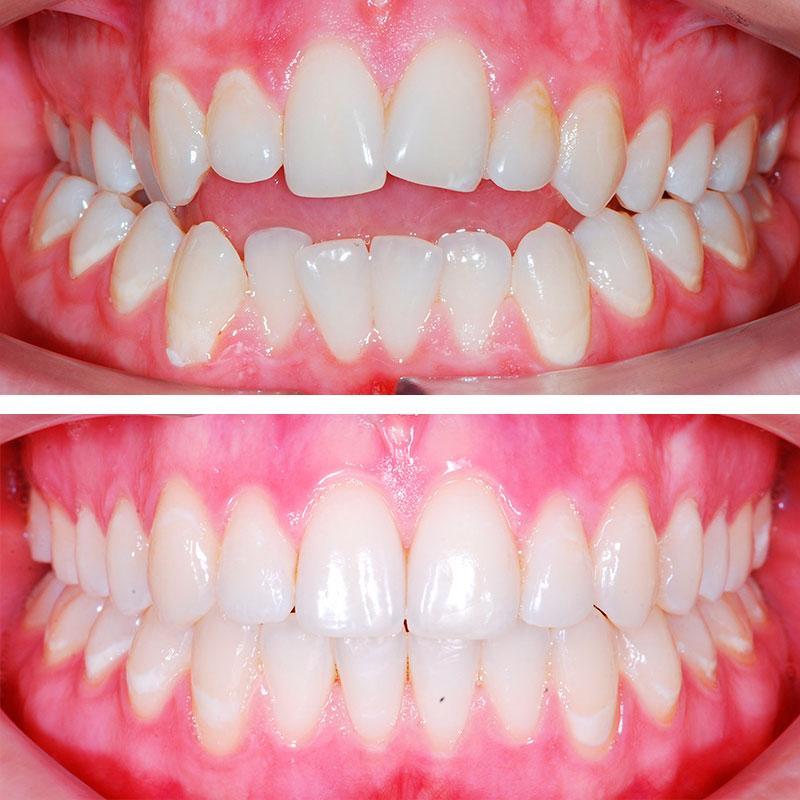
What Can a Bad Bite Cause?
An incorrect bite causes gum inflammation and periodontal disease with gradual loosening and loss of teeth, complicates oral hygiene routine, creates conditions for bacteria to multiply, causes tooth decay, and leads to ENT conditions. In addition, it causes dysfunction of temporomandibular joints, resulting in muscle pain and inflammation. It also leads to the rapid erosion of enamel, impairs chewing, and provokes gastrointestinal disorders, bronchial disorders, and lung diseases due to continuous mouth breathing; it also affects diction and makes speech unintelligible.
A bad bite may cause headaches. Dislocation of the maxillary joint results in the compression of nerve endings and vessels supplying blood to the brain.
Young and adult patients are often embarrassed by the appearance flaws caused by the incorrect bite and acquire a whole bunch of psychological problems. For example, an imperfect smile prevents them from showing off their skills in public speaking, performances, and theatre plays, leading to a lack of self-confidence in job interviews and communication with the opposite sex and refusing to be photographed.
To avoid the above problems, having a bite correction done as early as possible is worthwhile. Even in adulthood, modern orthodontic techniques can eliminate problems with occlusion. The benefits include beautiful and healthy teeth, symmetrical facial appearance and self-confidence, and greater success in career and private life.
Early diagnosis of bite problems will help you to have a perfect smile, increase your self-confidence and avoid health problems.

